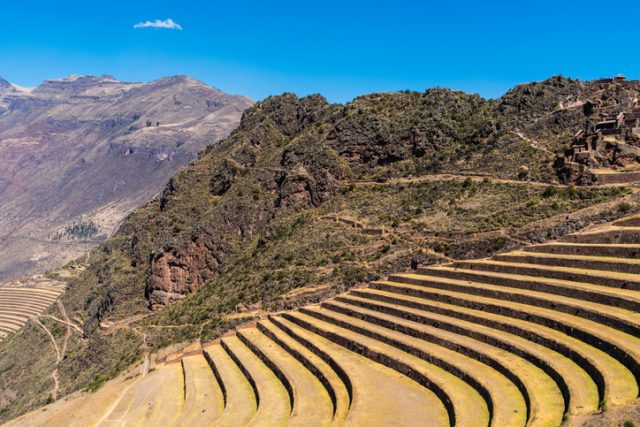It is said that there is nothing certain in this life except for death and taxes. Throughout all of history, governments of many shapes and sizes have sought out to impose one form of taxation or another upon their populations. In many cases it was less about profit, and more about a means of control.
The Inca Empire, the largest pre-Columbian empire, was a strong centrally planned government that expanded across much of South America.

This expansion was often a mixed bag — sometimes the conquests were military, with fierce attacks culminating in the execution of the leader, and other times it was a peaceful acquisition, where the superior Inca people would offer goods and riches in exchange for fealty.
But what was most important for the Inca Empire was tribute.

While the Inca rulers allowed their conquered territories to maintain their own cultural identities, practices and languages, they insisted on receiving tribute, in the form of goods or labor.
As a people, the Incas lacked currency or markets.
Gems and gold were primarily used for religious rituals and sacrifices to their sun god. They saw goods, labor and livestock as worthy tributes to be sent on a regular basis to the kingdom.

The matter of tribute wasn’t only about profit, however. Tribute was a means of ensuring that a conquered territory would stay loyal to their new leadership.
The Incas viewed tribute as one of the most important parts of their system. So important was it for them to impose tribute on everyone, that no one was exempt from their requirements.

Those who were too poor, elderly or infirm to obtain sufficient tribute would still be required to pay something. Every four months, tribute would be due.
Those who were unable to pay because of their poverty or frailty would be required to gather a quill full of live lice.
These lice would serve as the tribute to the Inca Empire. What was the value of a quill full of lice? It was an absolutely worthless good, but it wouldn’t be hard to collect.

By requiring everyone, even those who were down on their luck, to pay something, the Inca Empire was able to reinforce the idea that tribute is extremely important.
This might seem ridiculous at first, but once the span of the Inca Empire is considered, it makes more sense.
While the Inca Empire spanned across western South America, they were still spread out.

Travel wasn’t easy back in those days, and while they worked to construct roads to allow for faster movement, the Inca people did not ride animals nor have wagons.
For an empire to maintain control of a spread-out population, they would need more than just force.
The practice of getting individuals to accept and pay tribute, regardless of their circumstances reinforced the authority of the Empire.

Even the poor would have to pay tribute as a symbolic gesture of accepting their leaders.
On top of that, once the conditions for a family stricken with poverty improved, they would be accustomed to the practice of paying out tribute.
This meant that they would have little objection to paying a portion of their newfound wealth to their leaders.
Read another story from us: Trepanation: How the Incas needed that like a hole in the head
This practice of tribute was just another form of taxation, albeit a lot more forgiving than other nations, who would scoff at the idea of accepting lice as a form of payment. While it might have worked for the Inca people, the next time you owe on your tax bill, don’t send an envelope full of lice, it won’t get you off the hook!
